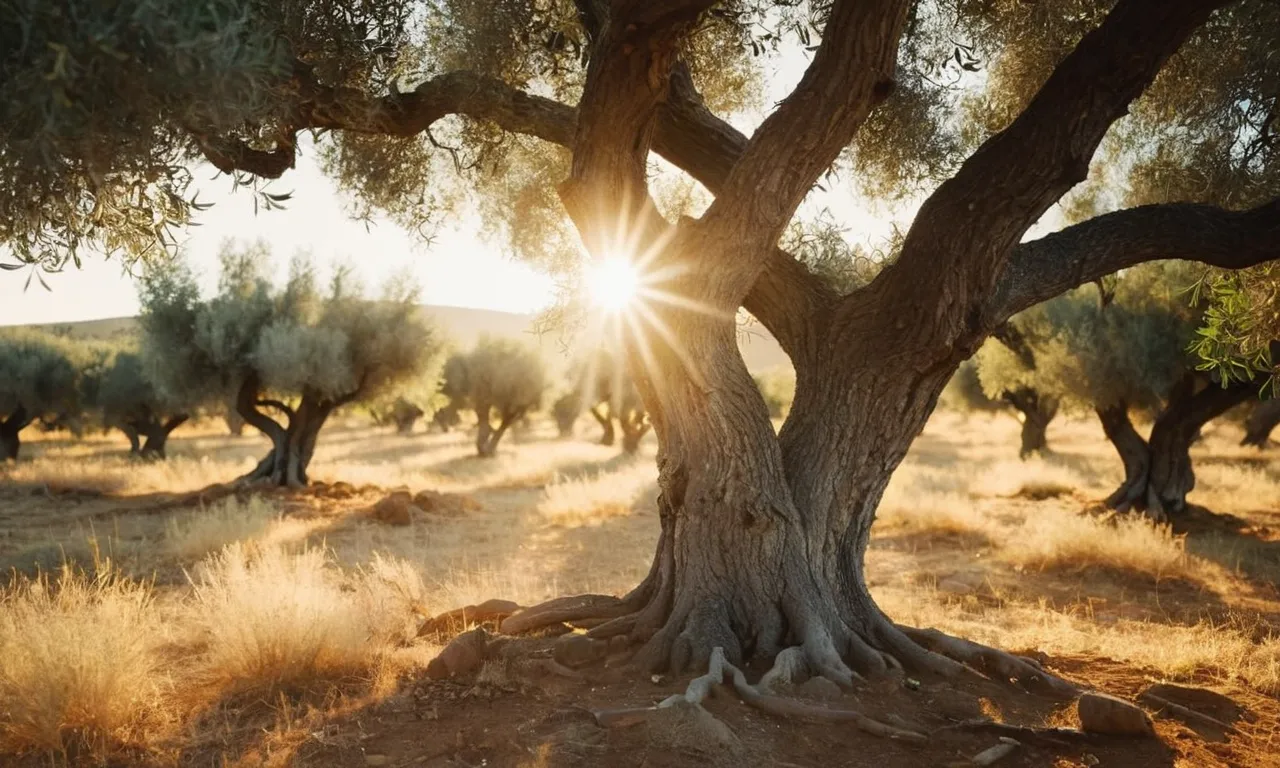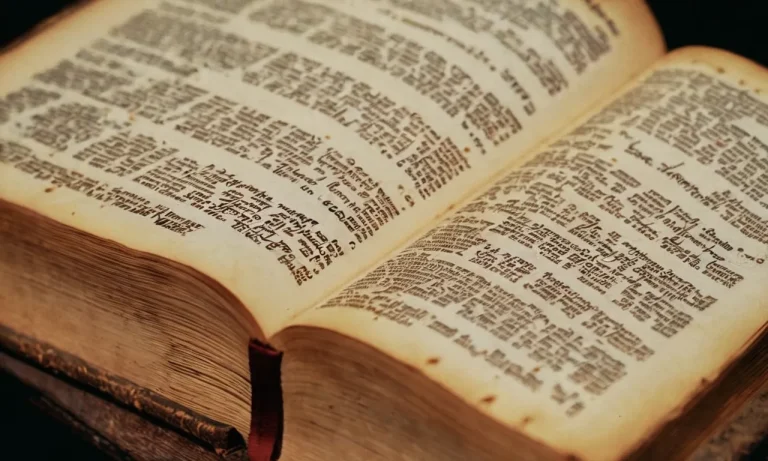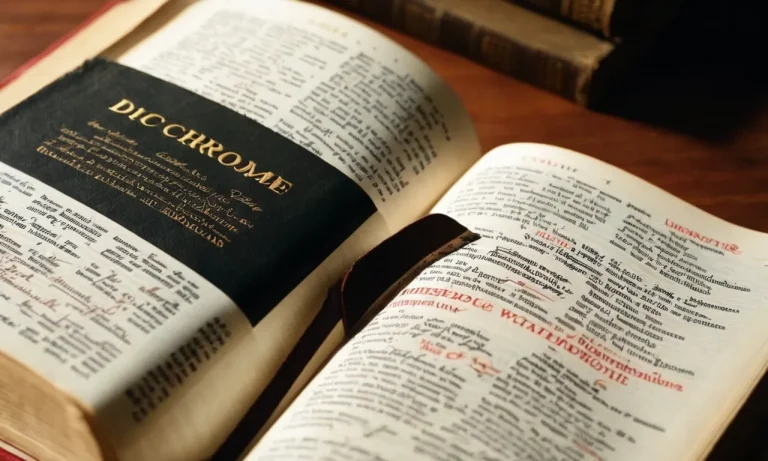What Do The Two Olive Trees Represent In The Bible?
The imagery of the two olive trees is an intriguing symbol that appears in the Old and New Testaments of the Bible. If you’re looking for a quick answer, the two olive trees represent the anointed ones who serve God – in Zechariah, they symbolize the offices of priest and king, while in Revelation, they represent the two witnesses who prophesy during the end times.
In this comprehensive article, we will examine the meaning behind the biblical metaphor of the two olive trees. We will explore how they are used in two key passages: Zechariah 4 in the Old Testament and Revelation 11 in the New Testament.
By looking at the context and theological significance of these scriptures, we will uncover the rich symbolism of the two olive trees and what they represent about God’s plan for His people.
The Two Olive Trees in Zechariah
Context of the Vision in Zechariah
In Zechariah 4, the prophet Zechariah sees a vision of a golden lampstand with a bowl at the top and seven lamps, with two olive trees standing beside it, one on each side. This vision comes as Zechariah is calling the people to rebuild the temple in Jerusalem after the Babylonian exile.
The lampstand and olive trees are symbols that held meaning for Zechariah’s original audience.
Meaning of the Lampstand and Two Olive Trees
The lampstand represents the temple menorah that was to be placed in the rebuilt temple, a symbol of God’s presence with His people. The two olive trees provided oil that flowed directly to the lampstand, keeping the lamps perpetually burning bright.
So the olive trees represent the constant supply of oil, empowering the lamps to shine the light of God.
The two olive trees are identified in verse 14 as representing “the two anointed ones who stand by the Lord of the whole earth. “ There have been differing views over who or what is specifically meant here. Some see them as representing Zerubbabel the governor and Joshua the high priest at that time.
Others think the olive trees represent prophets like Haggai and Zechariah through whom God spoke. Still others see them pointing forward to the offices of King and Priest that Jesus fulfills.
Significance of the Two Anointed Offices
A key significance is that the olive trees depict two agents of God who are empowered by the Spirit to lead and speak for God. Whether they represent leaders then or in the future, the two offices show the partnership of authoritative leadership and priestly mediation.
The oil flowing from the trees through the lampstand shows God’s Spirit and power channeled through His designated leaders.
For those who see Messianic symbolism, the two olive trees point to Jesus’ ultimate fulfillment of both the kingship and high priesthood, as the True Light of the World empowered by the Holy Spirit to shine God’s light and accomplish His redeeming work.
So in the context of Zechariah’s prophecies, this vision powerfully conveys God restoring His presence and light to His people through the rebuilt temple. And it assures them of His intention to raise up Spirit-empowered leadership to guide them as they seek to live out their covenant relationship with God.
For Christians, the vision also bears testimony to God’s Messianic plan to send His Anointed One, Jesus Christ, as the fulfillment of the offices of King and Great High Priest (https://www.gotquestions.org/Jesus-High-Priest.html).
The Two Witnesses as Olive Trees in Revelation
Context of the Two Witnesses in Revelation
The two witnesses are first mentioned in Revelation 11, where they are described as two prophets who will prophesy in Jerusalem for 1,260 days while wearing sackcloth. Their ministry will take place during a time of great tribulation after the temple in Jerusalem is measured and during the reign of the beast.
These two witnesses have power to shut up the sky so that rain will not fall, turn water into blood, and strike the earth with plagues. When they complete their testimony, the beast from the bottomless pit will kill them, and their bodies will lie in the street of Jerusalem for three and a half days before they are resurrected and ascend to heaven.
Identity of the Two Witnesses
The two witnesses are symbolically referred to as “the two olive trees and the two lampstands that stand before the Lord of the earth” (Revelation 11:4). This imagery connects back to a vision in Zechariah 4, where the prophet sees a gold lampstand with seven lamps and two olive trees on either side, providing oil to the lamps.
The olive trees represent “the two anointed ones” through whom the oil flows (Zechariah 4:14). In Zechariah’s context, these two figures were Zerubbabel, governor of Judah, and Joshua the high priest. The two witnesses in Revelation likely symbolize people who operate with prophetic and priestly authority, testifying during a time of exile and restoration, just as Zerubbabel and Joshua did.
There are various interpretations on the specific identity of the two witnesses. Some believe they represent Elijah and Moses, since these two prophets are said to return before the day of the Lord (Malachi 4:5, Matthew 17:11).
Others think they stand for the church bearing prophetic witness before the beast. Still others see them as actual individuals who will come in the end times to boldly proclaim God’s truth and perform miracles.
Connection to Zechariah’s Prophecy
The two witnesses in Revelation are purposefully linked to Zechariah’s vision. In both passages, the two olive trees/witnesses have a close relationship with oil, light, and lamps. By connecting these two prophecies, John indicates that the final period of tribulation before Christ’s return will parallel Israel’s experience in Zechariah’s day.
Zechariah encouraged Israel that their exile was almost over and God would restore their strength. Similarly, the two witnesses signal that the end is near, but God will preserve His people.
Another shared theme is the importance of rebuilding the temple. In Zechariah 4, Zerubbabel is commissioned to rebuild the physical temple in Jerusalem after the exile. In Revelation 11, John uses temple imagery to depict God’s presence with His people, first in physical Jerusalem and then in the heavenly Jerusalem that will descend at Christ’s return.
The two witnesses testify that God has not abandoned His people but remains present. Their prophetic ministry harkens back to Zechariah’s prophetic encouragement while also pointing forward to the ultimate fulfillment of all prophecy in Christ.
Theological Significance of the Olive Tree Symbolism
Source of Sustenance and Anointing
The olive tree provided key necessities for life in biblical times. The oil could be used for anointing leaders, lighting lamps, preparing food, and numerous other applications. As such, it came to symbolize divine provision of sustenance and anointing for God’s people (Psalm 23:5-6; Deuteronomy 8:8).
Today, the olive tree continues to remind Christians how God faithfully preserves and appoints His children for His holy purposes.
In Zechariah 4, the two olive trees likely represent the anointed priestly and kingly offices, empowered by God’s Spirit. These were vital for hearing God, guiding His people, and glorifying Him through worship and sacrifice.
Christians see these as pointing ahead to a far greater King and Priest – Jesus, the ultimate Anointed One, Anointed High Priest and King forever (Hebrews 6:20; Revelation 11:15).
Agent of Light and Revelation
The oil from the olive provides clear, bright light, untainted by smoke. It thus became a symbol illuminating God’s word and Spirit-led revelation in the Bible (Psalm 119:105; 1 John 2:20,27). The two olive trees in Zechariah, then, may represent the dual means of divine illumination – the written Scriptures and Spirit-revealed insight – working together as complementary agents of light for God’s people.
Just as golden olive oil fueled the seven-branched menorah shining resplendent light in the Temple’s Holy Place, these two trees provide continual fuel for fresh revelation. As Ephesians 1:17-18 tells us, God pours out “the Spirit of wisdom and revelation”, enlightening the eyes of our hearts for knowing Jesus better.
The two trees may symbolize this dual means of filling lamps with oil to see reality from heaven’s perspective.
Duality of Roles in Service of God
More broadly, the two olive trees likely signify the dual anointed roles mediated by God’s appointed leaders (kings and priests) to carry out His will. In Zechariah 4 the two men representing these roles are empowered directly by God to serve Him wholeheartedly, rebuilding the temple.
This foreshadows God’s ideal kingdom order – anointed leaders partnering together in submission to Him. Their authority is not their own, but delegated by the Lord. When operating according to His Spirit, they fuel and illuminate His purposes in the world.
Through them, the light of God’s presence burns brightly.
The two trees therefore represent how God commissions a diversity of anointed offices to witness to His glory in harmony and service. With oil continually supplied from Him – fresh filling of the Spirit and revelation from Scripture – devoted leaders faithfully shine divine light into the world’s darkness.
Conclusion
In summary, the image of the two olive trees in the Bible carries rich theological meaning. In Zechariah, they represent the royal and priestly offices that God would anoint to lead His people. In Revelation, they symbolize the authority given to the two witnesses to prophesy during the end times.
While their exact identities have been debated, the olive tree metaphor underscores their place as anointed agents of God’s light and revelation. As we have seen by examining these two passages in context, the two olive trees underscore God’s provision for His faithful people, giving sustenance, anointing and light to those who serve Him.








